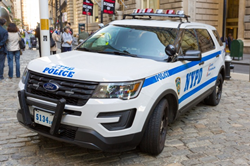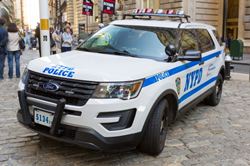
What to do at the scene of a car accident if the police do not come
“I decided to create this checklist to reduce the anxiety and panic drivers may feel in the event a police officer doesn’t respond to the scene of their accident.” – Barry Crupi, owner of Barry’s Auto Body
STATEN ISLAND, N.Y. (PRWEB)
January 31, 2020
Across America, some metropolitan area police departments have stopped responding to car accidents if (1) No person or domestic animal is hurt. (2) The vehicles can move. (3) The owner of the vehicle is present at the scene. The practice is being put in place to free up police officer’s time.
Understanding that drivers don’t always know what to do when they have a car accident, Barry’s Auto Body, Staten Island collision repair shop, is providing drivers with a checklist of actions which should be taken to protect themselves and ensure that their insurance company will honor whatever claim may arise from the accident.
Said Barry Crupi, owner of Barry’s Auto Body, “Because I run a Staten Island collision repair shop, I deal with insurance companies everyday. Even though I know what information they are looking for following an accident, the process can be quiet daunting. For a driver who may have only one or two accidents throughout all their years driving, it is important to know what to do in case of an accident. I decided to create this checklist to reduce the anxiety and panic drivers may feel in the event a police officer doesn’t respond to the scene of their accident.”
What to do at an automobile accident scene if police do not come:
(1) Both Drivers must exchange drivers licences, vehicle registrations and insurance information at the scene of the accident under the laws of most states.
(2) Immediately take photos of the other vehicle’s license plate, the damage to the car and scene photos to show how the accident happened. Step back 20 – 30 yards to get pictures of the entire scene. Showing all street signs, any corners or intersections where the accident happened. Take pictures of the person driving and the people in the car so you have a record of who was there.
(3) If possible, create a voice recording of you and the other driver describing how the accident happened. People don’t always remember things clearly when they are stressed.
(4) You should not assign or accept fault at the accident scene. Many times people think they are wrong when they are not.
(5) Get the other drivers telephone number.
(6) If you called the police and they decided that the accident did not rise to the level of response but a tow truck driver appears on the scene anyway, be cautious. Do not be pressured into taking a tow or signing anything. Most states have laws prohibiting unscrupulous activity by tow truck drivers. It is a good idea to know your rights when it comes to tow truck drivers by searching for them on the internet in advance of a vehicle accident. If you are a New York Driver you can watch a video here.
(7) If your vehicle is in need of repair, take it to an auto body collision facility you trust. Let the facility help you put in an insurance claim if necessary. Many people make the mistake of calling their insurance company before they know the extent of their vehicle damage. You should go over the car with an auto body expert before you report a claim to your insurance company to ensure that any repair work needed on the vehicle is done correctly and is completely covered by your insurance company.
(8) Call a lawyer if you need legal advice.
Barry’s Auto Body has developed a series of videos and blogs to help drivers understand best practices when it comes to auto body repair. The information can be found on http://www.BarrysAutoBody.com and on Barry’s Auto Body YouTube channel.
Share article on social media or email:

